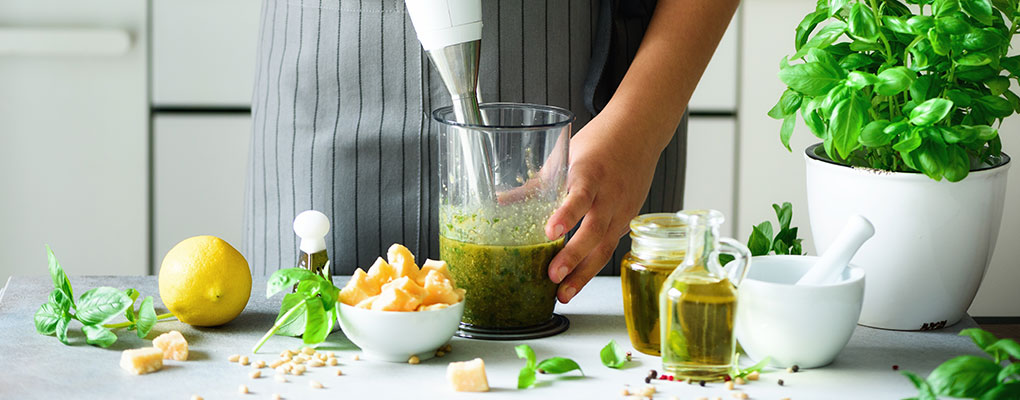
It’s one of the most persistent myths that just won’t go away. In fact it is so engrained in so many people’s minds, even top chefs repeat the fallacy that good extra virgin olive oil (EVOO) should only be used cold and never to cook with. Let’s get this straight, you can and should cook with extra virgin olive oil. Here’s why.
EVOO is the highest grade of olive oil, extracted from the fruit of the olive tree via mechanical means without heat or chemicals. As a result, it retains maximal levels of antioxidants such as Vitamin E originating from the skin and flesh of the fruit. This extraction process also means that, unlike oils that undergo an industrial refining process, EVOO does not contain trans fats (as these are artificially produced during the refining process).
A quick background lesson in chemistry explained by Dr Joanna McMillan:
Contrary to popular belief, the smoke point of an oil is a poor predictor of an oil’s stability and safety when cooking. It is a term used to describe the temperature at which you’ll see a bluish smoke rising continuously from the oil. (Note that extra virgin olive oil is a natural product and so contains a little water. This means that when you heat it in the pan you’ll often see steam rising well before the oil reaches its smoke point – don’t confuse this and think you are damaging the oil.) Heating the oil above its smoke point increases the likelihood of oxidative damage and the creation of potentially harmful compounds.
Research shows that oxidative stability is a better predictor of an oil’s stability than smoke point. This is influenced by the fat profile and the level of antioxidants in the oil. As we now know, polyunsaturated fats have lots of double bonds these fats are the most fragile and prone to damage. In contrast, saturated fats with no double bonds are extremely stable, while monounsaturated fats with only double bond are also highly resistant to oxidative damage.
Extra virgin olive oil has three key qualities that make it an excellent cooking oil: it contains predominantly stable monounsaturated fatty acids, it has a low level of free fatty acids and it has a high level of protective antioxidants.
The smoke points of extra virgin olive oils range from about 190-220°C. The best quality oils, including Cobram Estate extra virgin olive oils, come in at the higher end of the range. When we compare this to cooking in reality, sautéing on the stove equates to a temperature of around 120°C, deep-frying is usually in the range 160-180°C and roasting in the oven 180°C. It is not often you would cook at any temperature higher than this.
Dr Joanna also states that several good studies have confirmed the stability of extra virgin olive oil during cooking. One in particular repeatedly heated a variety of oils for a long period of time to take them up to extremely high temperatures, ideally to test the point at which various oils will actually break down. “These conditions would almost never happen in home cooking so the fact that extra virgin olive oil stands up consistently well in these tests really does confirm the safety of using the oil at home. The same is not true of oils high in polyunsaturated fats such as sunflower or generic ‘vegetable’ oil.”
When purchasing EVOO ensure that the oil is clearly labelled “Extra Virgin” Olive Oil. To check the oil is certified for meeting the Extra Virgin grade requirements, look for the Australian Olive Association symbol on pack (a green triangle logo). EVOO is best used within 12–14 months from the time of harvest. Australian EVOO is harvested between March and June each year. Look for the harvest date on the front or side of pack to ensure you are buying the freshest and healthiest oil. Once opened, use the oil within 4–6 weeks to ensure the oil has the best flavour and health benefits, otherwise keep in a dark dry place at room temperature.
Tap to call us at 1800 567 348
Fill in your details below and our team will be in contact shortly to answer your questions and get you started.
"*" indicates required fields